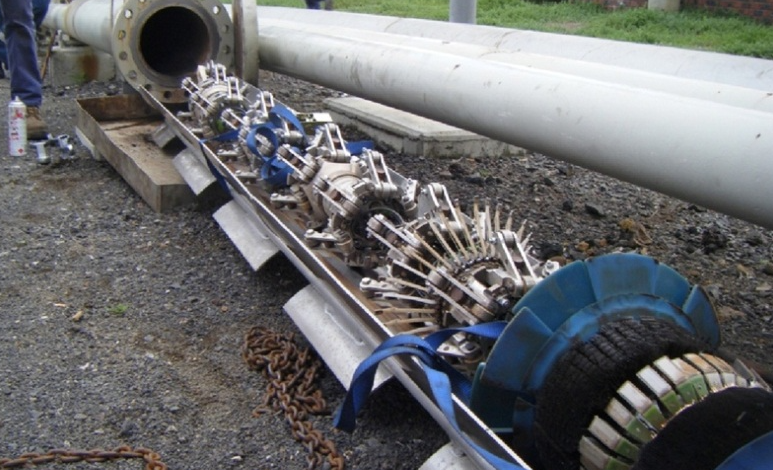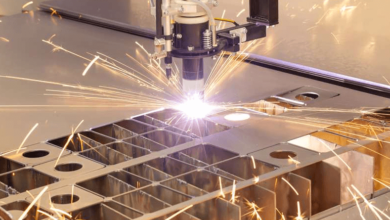What Is Pigging System? An Essential Technology for Modern Pipeline Operations

In today’s fast-paced industrial world, the need for efficient, safe, and contamination-free transport of fluids and gases through pipelines is more critical than ever. From oil and gas to pharmaceuticals and food manufacturing, pipelines are essential infrastructure. But over time, these pipelines can accumulate debris, product residues, or contaminants. The solution? A technology known as pigging. But more specifically, what is pigging system and how does it operate? This article explores the full scope of what pigging systems are, how they work, and why they’re crucial in various industries.
What Is Pigging System?
To put it simply, a pigging system is a specialized setup within a pipeline that allows for the insertion, movement, and removal of a device called a “pig.” This device is pushed through the pipeline by pressure—either from the product itself or a separate gas source—to perform a range of functions such as cleaning, product recovery, inspection, and separation.
When asking what is pigging system, you’re referring not just to the pig itself but to the integrated hardware (like launchers, receivers, and control valves) and procedures that make pigging possible and repeatable within pipeline infrastructure.
See also: How AI Video Generator Technology Works Behind the Scenes
Origin of the Term “Pigging”
The term “pigging” is believed to originate from the squealing sound made by early pipeline cleaning tools as they scraped against pipe walls. While that might sound archaic, pigging technology today is highly advanced and customized for the pipeline’s material, size, and function.
Components of a Pigging System
Understanding what is pigging system means breaking it down into its main components. A modern pigging system typically includes:
1. Pig Launcher
A specially designed chamber installed at the pipeline’s beginning. It holds the pig until it’s pressurized and launched into the pipe.
2. Pig Receiver
Located at the other end of the pipeline, the receiver safely collects the pig after it completes its journey.
3. The Pig Itself
Depending on the application, pigs come in various forms:
- Foam pigs for lightweight cleaning
- Cup or disc pigs for debris removal
- Brush pigs for heavy-duty cleaning
- Smart pigs with sensors for inspection
4. Propellant Source
Usually, the pig is pushed by the product flow, but in some systems, compressed air, nitrogen, or water may be used as a driving force.
5. Valves and Controls
These regulate the pressure and flow, ensuring smooth pig movement and safe system operation.
How Does a Pigging System Work?
Now that we’ve answered what is pigging system, let’s see how it works in practice. The operation is typically carried out in the following steps:
- Preparation: The system is isolated, and the pig is inserted into the launcher. The valves are set to ensure correct flow direction and safety.
- Launching the Pig: Pressure is applied behind the pig to push it into the pipeline. This pressure may come from the product itself or an external source.
- Pig Movement: As the pig travels through the pipeline, it performs its designated task—cleaning, separating products, pushing fluids, or scanning the interior walls.
- Monitoring: In some cases, sensors are used to track the pig’s progress. This is especially important in long-distance or smart pigging systems.
- Receiving the Pig: Once it reaches the end, the pig enters the receiver and is safely removed for inspection or reuse.
Types of Pigging Systems
There are different pigging systems designed based on industry requirements and operational conditions. These include:
1. Conventional Pigging Systems
Used primarily in oil and gas pipelines for routine cleaning and maintenance. These systems require manual operation and are ideal for long-distance runs.
2. Hygienic Pigging Systems
Used in food, beverage, and pharmaceutical industries. Designed with sanitary materials and fittings to prevent contamination and ensure product purity.
3. Automated Pigging Systems
These use programmable logic controllers (PLCs) and automation to launch and receive pigs without manual intervention. Common in industries where pigging occurs frequently.
4. Smart Pigging Systems
These systems incorporate intelligent pigs that carry sensors to inspect the internal condition of the pipeline. They are used for corrosion mapping, crack detection, and geometry measurement.
Industries That Use Pigging Systems
Understanding what is pigging system also means recognizing where it’s used. Let’s look at a few key industries:
✅ Oil and Gas
The most traditional and widespread use of pigging. Helps in cleaning, dewatering, and inspecting long pipelines carrying crude oil or natural gas.
✅ Food and Beverage
In industries producing sauces, beverages, dairy, or creams, pigging is essential to recover expensive product residues and clean pipelines between batches.
✅ Chemicals and Paints
Pigging prevents cross-contamination between different chemical products and ensures accurate batch transitions with minimal waste.
✅ Water and Wastewater Treatment
Pigging systems keep water pipelines clean and functioning, particularly in long-distance or industrial applications.
✅ Pharmaceutical Manufacturing
Sterile pigging systems are used in drug manufacturing to ensure compliance with strict hygiene and contamination control standards.
Innovations and the Future of Pigging
As industries move toward smarter, cleaner, and more efficient processes, pigging systems are also evolving. Some future trends include:
- Real-time data from smart pigs for proactive pipeline maintenance
- Integration with IoT systems for remote monitoring and automation
- Eco-friendly pig materials to support sustainability initiatives
- Compact hygienic pigging systems for small-scale or modular processing facilities
These innovations will make pigging even more versatile and valuable in years to come.
Final Thoughts
To sum it up, what is pigging system is a question that unlocks a world of technology designed to optimize, protect, and sustain pipeline operations. From cleaning crude oil lines to recovering chocolate syrup in food production, pigging systems have proven their worth in nearly every pipeline-based industry.
As global demand for operational efficiency and environmental responsibility grows, pigging systems will remain essential—delivering cleaner pipelines, reduced waste, and smarter operations for the industries of tomorrow.




